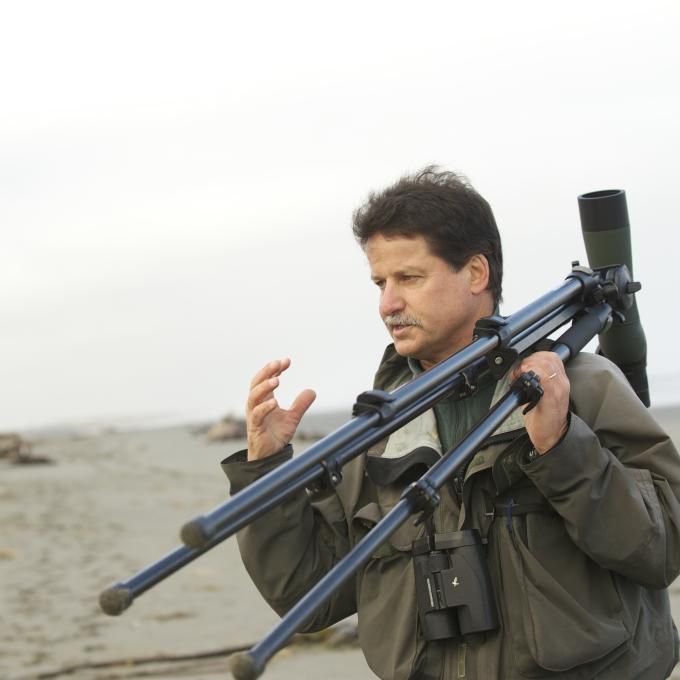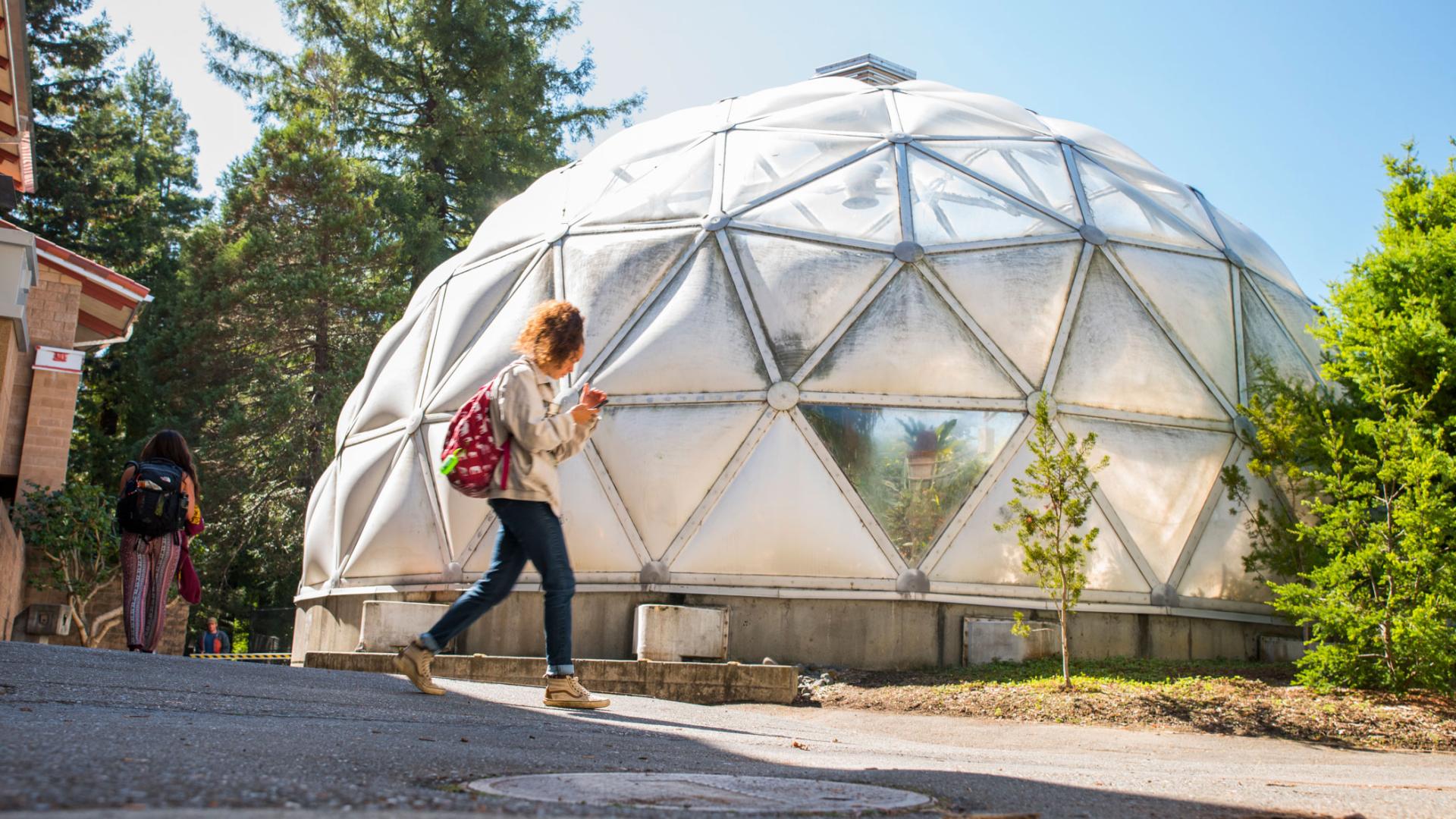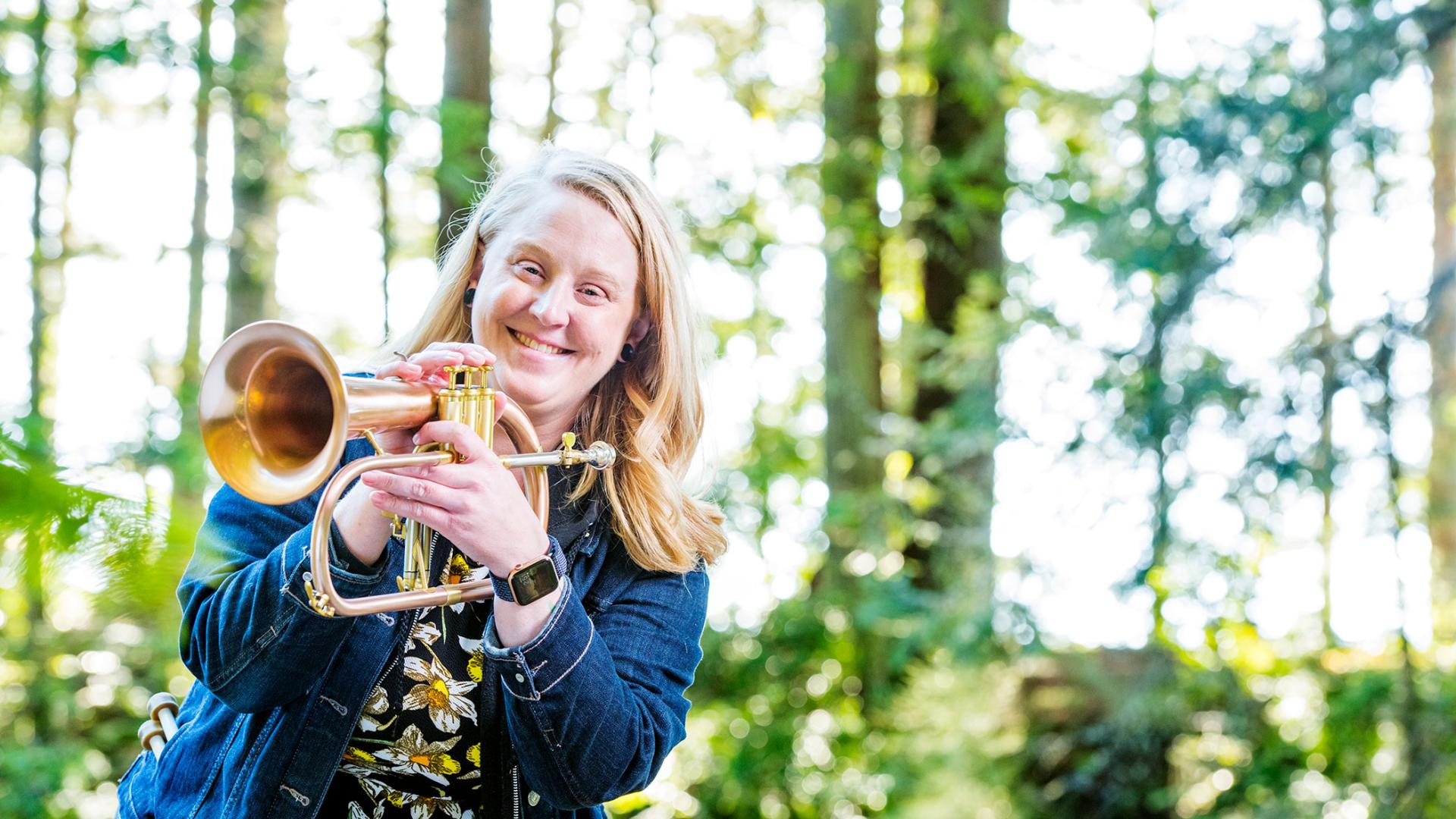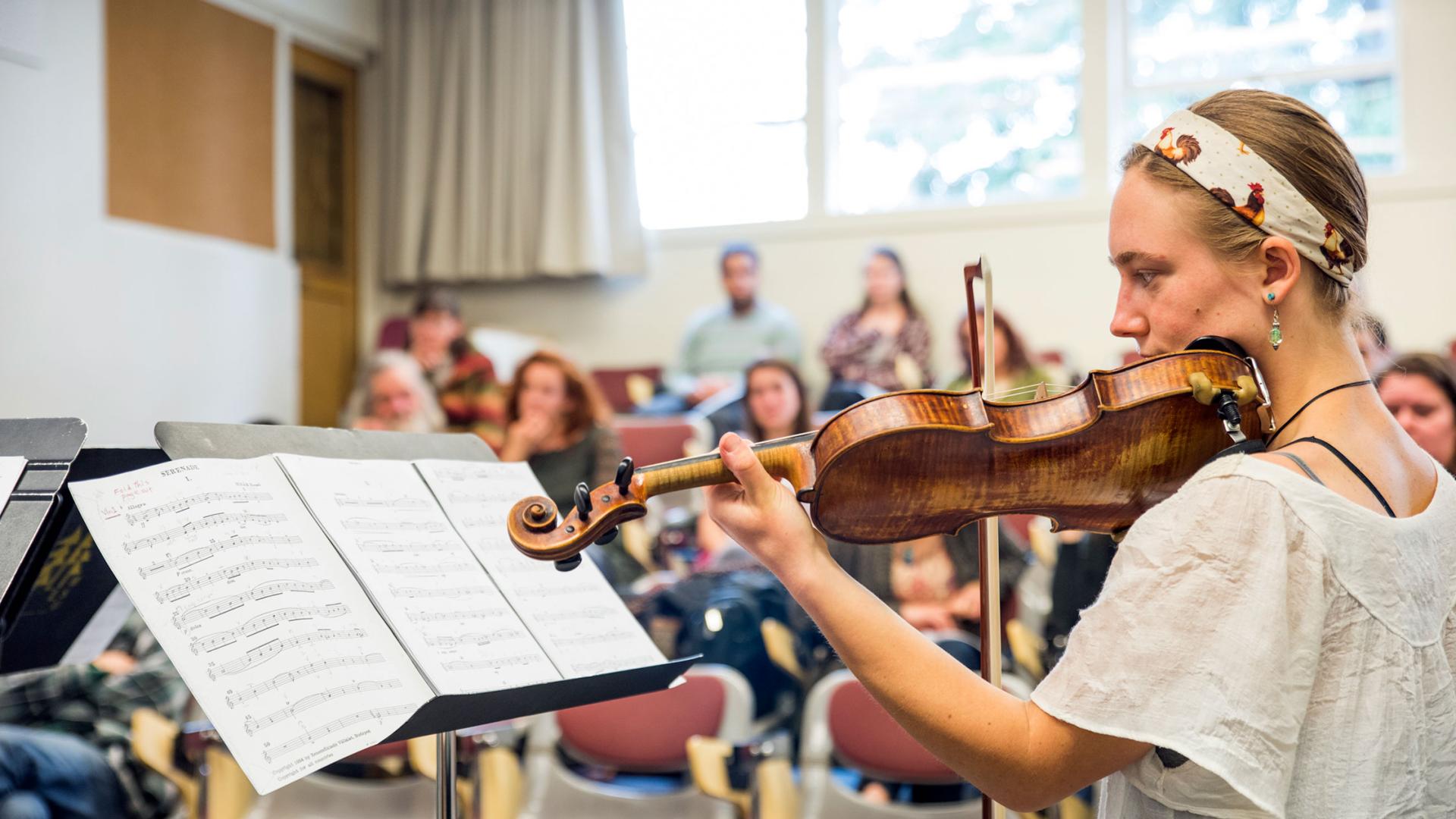Breadcrumb

Mark Colwell
Professor Emeritus
Teaching
My primary goal in teaching is to inspire students to learn more about the natural world, whether it be through a simple understanding of the biology of a bird or the complexity of ecological theory. I attempt to instill in students the importance of gaining factual knowledge, such that they will possess enhanced abilities to make wise decisions regarding conservation of earth's natural heritage. And, I expect students to be able to communicate their knowledge effectively, to me, other scientists, and the public.
To accomplish this, I have designed many of my courses with a healthy dose of field exercises to instill in students an appreciation for the natural world while expanding their ecological knowledge. These experiences often serve as direct links to material presented in lectures. My approach to teaching varies with the target audience (i.e., general education, junior-level wildlife majors, advanced undergraduates, and graduate students). For instance, in my summer GE course (Birds and Human Society), I motivate students to open their eyes to the natural world around them and to appreciate how the everyday life of birds relates to humans (via food, recreation, disease). In my junior-level classes (Principles of Wildlife Management), I instill an appreciation for theory, its relationship to empirical knowledge, and its application to real world circumstances, such as predator control in Alaska. And, in advanced courses (Shorebird Ecology and Conservation), I emphasize the primary literature and attempt to have students apply ecological knowledge to management and conservation scenarios that they have experienced in and around Humboldt Bay (conservation of Snowy Plovers, oyster-culture impacts on intertidal habitats). These various courses represent a "stepping stone" of expectations for students with varying backgrounds, interests, and professional aspirations. Regardless of the class, however, I expect students to master material such that they can communicate effectively their knowledge of a subject and make intelligent decisions regarding management and conservation of wildlife.
I love to teach, and I think I do so with enthusiasm. This may be the most important facet of my approach to teaching.to share with students my appreciation for the wonder of the natural world, and its value to humans.
Areas of Interest
Shorebird ecology, management of wetlands for shorebirds, refuge design. Courses include: Ornithology, Conservation Biology, Management of Shorebirds, Birds and Human Society.
- Post-Doctoral Research Associate, University of North Dakota 1987-1989
- Ph.D. Biology, University of North Dakota 1987
- B.A. Biology, Whitman College 1979
- Birds & Human Society
- Ornithology
- Shorebird Ecology, Conservation & Management
- Conservation Biology
- Principles of Wildlife Management
- Wildlife Ecology & Management
2018
- Colwell, M.A., K.M. Raby and E.J. Feucht. 2018 Breeding efficiency: A metric for assessing habitat quality and individual performance? Wader Study.
- Colwell, M.A. and E.J. Feucht. 2018. Humboldt Bay, California is more important to spring migrating shorebirds than previously recognized. Wader Study DOI:10.18194/ws.00111.
- Brinkman, M.P., D.K. Garcelon and M.A. Colwell. 2018. Evaluating the efficacy of Carbachol at reducing corvid predation on artificial nests. Wildlife Society Bulletin DOI: 10.1002/wsb.852
- Patrick, A.M.P. and M.A. Colwell. 2018. Annual variation in distance to nearest neighbor nest decreases with population size in snowy plovers. Wader Study DOI: 10.18194/ws.00089
2017
- Colwell, M.A., E.J. Feucht, S.E. McAllister and A.N. Transou. 2017. Lessons learned from the oldest Snowy Plover. Wader Study 124:000-000.
- Colwell, M.A., E.J. Feucht, M.J. Lau, D.J. Orluck, S.E. McAllister and Amber N. Transou. 2017. Recent snowy plover population increase arises from high immigration rate in coastal northern California. Wader Study 124:40-48.
2015
- Eberhart-Phillips, L.J., B.R. Hudgens, and M.A. Colwell. 2015. Spatial synchrony of a threatened shorebird: regional roles of climate, dispersal and management. Bird Conservation International 25:119-135.
- Herman, D.M and M.A. Colwell. 2015. Lifetime reproductive success in the snowy plover. Condor 117:473-481.
2014
- Eberhart-Phillips, L.J. and M.A. Colwell. 2014. Conservation challenges of a sink: the viability of an isolated population of the snowy plover. Bird Conservation International. 24:327-342.
2013
- Colwell, M.A., W.J. Pearson, L.J. Eberhart-Phillips, and S.J. Dinsmore. 2013. Apparent survival of snowy plovers (charadrius nivosus) varies with reproductive effort and year and between sexes. Auk 130:725-732.
- Pearson, W.J. and M.A. Colwell. 2013. Effects of nest success and mate fidelity on breeding dispersal of snowy plovers charadrius nivosus. Bird conservation international 24:342-353.
2012
- Burrell, N.S. And M.A. Colwell. 2012. Direct and indirect evidence that productivity of snowy plovers charadrius nivosus varies with occurrence of a nest predator. Wildfowl 62:202-221.
- Franks, S. et al. (long list of co-authors, including Colwell, M.A). 2012. Range-wide patterns of migratory connectivity in the western sandpiper calidris mauri. Journal Avian Biology 43:1-13.
- Hardy, M.A. And M.A. Colwell. 2012. Factors influencing snowy plover nest survival on ocean fronting beaches in coastal northern California. Waterbirds 35:503-511.
- Watts, C.M., J. Cao, C. Panza, C. Dugaw, M. Colwell and E.A. Burroughs. 2012. Modeling the effects of predator exclosures on a western snowy plover population. Natural Resource Modeling 25:529-547.
2011
- Colwell, M.A., J.J. Meyer, M.A. Hardy, S. McAllister, A. Transou, R. LeValley, & S.J. Dinsmore. Western Snowy Plovers Charadrius alexandrinus nivosus select nesting substrates that enhance egg crypsis and improve nest survival. Ibis 153:303-311.
- Colwell, M.A. And W.J. Pearson. 2011. Four cases of inbreeding in a small population of the snowy plover. Wader study group bulletin 18:181-183.
- Brindock, K.M. & M.A. Colwell. Habitat Selection by Western Snowy Plovers During the Nonbreeding Season. The Journal of Wildlife Management 75(4):786-793.
2010
- Colwell, M.A. Shorebird Ecology, Conservation and Management. University of California Press.
- Colwell, M.A., N.S. Burrell, M.A. Hardy, K. Kayano, J.J. Muir, W.J. Pearson, S.A. Peterson, & K.A. Sesser. Arrival times, laying dates, and reproductive success of Snowy Plovers in two habitats in coastal northern California. Journal of Field Ornithology 81:349-360.
- Muir, J.J., & M.A. Colwell. Snowy Plovers select open habitat for courtship scrapes and nests. Condor 112:507-510.
- Mullin, S.M., M.A. Colwell, S.A. McAllister, & S.J. Dinsmore. Apparent survival and population growth of Snowy Plovers in coastal northern California.
Journal of Wildlife Management 74:1792-1798.
- Wilson, C.A. & M.A. Colwell. Movements and Fledging Success of Snowy Plover(Charadrius alexandrinus ) Chicks. Waterbirds 33(3): 331-340.
2008
- Bluso-Demers, J.D., M.A. Colwell, J.Y. Takekawa, & J.T. Ackerman. Space use by Forster 's terns breeding in South San Francisco Bay. Waterbirds 31:357-364.
- Conklin, J.R., M.A. Colwell, & N.W. Fox-Fernandez. High variation in roost use by Dunlin wintering in California: Implications for habitat limitation. Bird Conservation International 18:275-291.
- Conklin, J.R. & M.A. Colwell. Individual associations in a wintering shorebird population: do Dunlin have friends? Journal of Field Ornithology. 79:32-40.
- Demers, S.A., M.A. Colwell, J.Y. Takekawa, & J.T Ackerman. Breeding stage influences space use of female American avocets in San Francisco Bay, California. Waterbirds 31:365-371.
- Hardy, M.A. & M.A. Colwell. The impact of predator exclosures on Snowy Plover nesting success: a seven-year study. Wader Study Group Bulletin 115:161-166.
2007
- Colwell, M.A., S.J. Hurley, J.N. Hall, & S.J. Dinsmore. Age-related survival and behavior of Snowy Plovers chicks. Condor 109:638-647.
- Colwell, M.A., S.E. McAllister, C.B. Millett, A.N. Transou, S.M. Mullin, & Z.J. Nelson, C.A. Wilson, R.R. LeValley. Philopatry and natal dispersal of the Western Snowy Plover.Wilson Journal of Ornithology. 119:378-385.
- Conklin, J.R. & M.A. Colwell. Interactions of predators and manmade object causes potentially significant mortality in a wintering shorebird population. Wader Study Group Bulletin 112:57-59.
- Conklin, J.R. & M.A. Colwell. Diurnal and nocturnal roost site fidelity of Dunlin (Calidris alpina pacifica) at Humboldt Bay, California. Auk 124:677-689.
2006
- Colwell, M.A. Egg-laying intervals in shorebirds: Influences of time, energy and risk of clutch loss. Wader Study Group Bulletin 111:50-59.
- Mathis, R.L., M.A. Colwell, L.W. Leeman, & T.S. Leeman. Long-billed Curlew distributions in intertidal habitats: Scale-dependent patterns. Western Birds. 37:156-168.
2005
- Connolly, L.M., & M.A. Colwell. Comparative use of longline oysterbeds and adjacent tidal flats by waterbirds. Bird Conservation International 15:237-255.
- Colwell, M.A., C.B. Millett, J.J. Meyer, J.N. Hall, S.J. Hurley, S.E. McAllister, A.N. Transou, & R.R. LeValley. Snowy Plover reproductive success in beach and river habitats. Journal of Field Ornithology 76:373-382.
- Leeman, T.S., & M.A. Colwell. Coastal pasture use by Long-billed Curlew at the northern extent of their non-breeding range. Journal Field Ornithology 76:33-39.
View 2004 - 1986 publications »
Presentations at Professional Meetings
I regularly present and co-author papers at regional and national meetings. For example, in 2006-07, I co-authored 9 papers with students at three CA meetings: 1) Western Section of The Wildlife Society, Monterey; 2) Pacific Seabird Group, Asilomar; and 3) Society of Wetland Scientists, Sacramento.
For nearly 35 years, I have studied shorebird ecology. I began my graduate research with Dr. Lewis Oring at the University of North Dakota, where I studied various aspects of the sex-role reversed mating systems of Wilson's Phalarope and Spotted Sandpiper. When I came to Cal Poly Humboldt in 1989, I realized the tremendous research opportunities that existed in and around Humboldt Bay. Accordingly, I have continued to use shorebirds as model organisms to examine the consequences of individual behavior to population and community ecology. Throughout my research career at Humboldt, my students and I have applied the knowledge we have gained to conserve and manage populations of shorebirds, and the habitats they occupy.
Roosts and flocking behavior are conspicuous aspects of the nonbreeding ecology of most shorebirds, especially in coastal habitats where tides predictably inundate tidal foraging habitats. Since 2001, my students and I have documented variation in roost use by shorebirds around Humboldt Bay using bay-wide surveys, and by studying radio-marked Dunlin. We've learned that roosts are numerous (and don't appear to be a limiting feature of wintering habitat); only a small proportion of roosts are used consistently. During the day, Dunlin typically roost near tidal habitats of the bay, and they readily move among roosts from one day to the next. At night, however, individuals are found more consistently in the same roost, which typically is located in pastures several kilometers from the tidal flats. For details, see Conklin and Colwell 2007a, Conklin and Colwell 2007b.
The Western Snowy Plover is listed as threatened under the U.S. Endangered Species Act. Since 2000, I have worked collaboratively with biologists at Mad River Biologists to monitor the population of plovers that breeds in Mendocino, Humboldt and Del Norte counties, California. Our studies have shown that this population is relatively stable, and maintained by immigration from elsewhere along the Pacific coast.Colwell et al. (2017). Additionally, the reproductive success of local plovers is poor, especially on ocean beaches where human activity, native predators of eggs and chicks, and introduced plants compromise productivity. By contrast, plovers breeding on gravel bars of the lower Eel River have high reproductive success, probably owing to low human activity and the cryptic nature of substrates that hides nests and chicks from predators. For details, see Colwell et al. 2005.
Humboldt Bay is the most northerly wintering site for significant numbers of the Long-billed Curlew, the largest North American shorebird. My students and I have shown that several hundred curlews are present from mid-June into April; some individuals over-summer locally as well. Across Humboldt Bay, curlews are patchily distributed in areas near their roosts and where substrates support their prey. During summer and fall, some curlews defend territories in intertidal habitats where they feed on polychaetes, decapods, bivalves and fishes. With the onset of winter rains, however, individual residency on these territories diminishes and a portion of the local population shifts to feeding in pastures on worms and other invertebrates. For details, see Mathis et al. 2006, Leeman et al. 2001, Leeman and Colwell 2005.
I maintain a longstanding interest in avian breeding ecology. Egg-laying is an important facet of reproductive biology that varies among and within species. Recently, I published a review article that showed that the minimum laying interval between consecutive eggs in shorebird clutches was either 1 or 2 days, although these minimum intervals certainly lengthen during periods of inclement weather. Interspecific differences correlated better with a species' breeding latitude (i.e. species breeding at northerly latitudes typically lay at daily intervals compared with temperate or tropical taxa). Additionally, species such as sandpipers that nest in vegetated habitats that conceal the eggs and adult tend to lay at daily intervals compared with plovers, which nest in the open. This suggests that risk of clutch loss (to predation, or other environmental causes) influences laying intervals. There was no relationship between egg (or clutch) mass and laying interval. For details, see Colwell 2006.
Wetland habitats are among the most threatened worldwide, and waterbirds are especially reliant on wetland resources for survival and reproduction. My students and I have worked in managed wetlands of the northern San Joaquin Valley and the rice fields of the Sacramento Valley to understand how water levels can be manipulated to accommodate diverse assemblages of waterbirds. Additionally, I remain interested in the consequences of human degradation of wetland habitat quality via disturbance, aquaculture, and development. For details, see Connolly and Colwell 2005, Taft et al. 2002.
I have supervised 41 graduate students who have worked directly with me on topics related to the ecology of waterbirds, especially shorebirds. There are also several students currently enrolled and working on their theses. Additionally, I have served on graduate committees for many other students pursuing a master's degree in Wildlife, Biology and Math Modeling. Below is a chronological list of graduate students who completed work with me.
2016
- Dejoannis, Alexis. 2016. A description of pre-alternate molt in snowy plovers.
- King, Teresa. 2016. Raven abundance, habitat use, and activity in association with exclosures.
2015
- Brinkman, Matthew. 2015. Response of common ravens to conditioned taste aversion
- Leja, Stephanie. 2015. Snowy plover response to natural and human-caused restoration
- Lau, Matt. 2015. Geo-spatial modeling of common raven distribution in snowy plover habitats.
2014
- Herman, Dana. 2014. Lifetime reproductive success in snowy plovers.
2013
- Patrick, Allison. 2013. Semi-colonial breeding in the snowy plover (charadrius nivosus).
- Sesser, Kristin. 2013. Habitat and space use by long-billed curlews in the central valley of California.
2012
- Eberhart-Phillips, Luke. 2012. Population viability analysis of the snowy plover in northern California.
- Peterson, Sara. 2012. Using effigies to deter American crows and common ravens in snowy plover breeding habitat.
2011
- Adams, Tia. Roost site selection of dunlin (Calidris alpina) on Humboldt Bay, Humboldt County, California.
- Pearson, Wendy. Effects of nest success and mate fidelity on breeding dispersal in a population of Snowy Plovers.
2010
- Burrell, Noah. Breeding patch dynamics of Snowy Plovers in Humboldt County, California.
- Hardy, Michael. Western Snowy Plover nest survival on ocean-fronting beaches in coastal northern California.
2009
- Brindock, Kevin. Habitat Selection by Western Snowy Plovers (Charadrius alexandrinus nivosus) during the nonbreeding season
2007
- Bluso, Jill. Sex-specific space use of Forster’s Terns (Sterna forsteri) breeding in the South San Francisco Bay, California.
- Demers, Scott. Space use of American Avocets (Recurvirostra americana) in South San Francisco Bay, California.
- Nelson, Zach. Social attraction in the Western Snowy Plover (Charadrius alexandrinus nivosus).
- Wilson, Carol. Age-related movements and distribution of Western Snowy Plover (Charadrius alexandrinus nivosus)broods.
2006
- Mullin, Stephen. Apparent survival and population growth of Western Snowy Plovers (Charadrius alexandrinus nivosus) in Humboldt County, California.
- Fox-Fernandez, Nancy. Roost use by wintering Dunlin at Humboldt Bay, California: Relationship to predation danger and human activity.
2005
- Conklin, Jesse. Roose site-fidelity of Dunlin (Calidris alpina pacifica) wintering on Humboldt Bay, California.
- Millett, Cheryl. The influence of sex and reproductive experience on philopatry and adult site fidelity of Western Snowy Plovers (Charadrius alexandrinus nivosus) in Humboldt County, California.
- Meyer, Jason. Egg Crypsis and Snowy Plover (Charadrius alexandrinus nivosus) clutch survival along the Eel River in Humboldt County, California.
- Hurley, Susan. Survival and behavioral development of Western Snowy Plover (Charadrius alexandrinus nivosus) chicks.
- Hoffmann, Alexandra. Incubation behavior of female Western Snowy Plovers (Charadrius alexandrinus nivosus) on sandy beaches.
2004
- Hall, James. Western Snowy Plover (Charadrius alexandrinus nivosus) chick survival in two habitats in Humboldt County, California.
2003
- Marriot, Meg. Microhabitat characteristics predictive of Snowy Plover (Charadrius alexandrinus nivosus) nest site selection in south San Francisco Bay.
- Roth, Jennifer. Sex differences in space use of breeding Common Ravens (Corvus corax) in western Marin County, California.
2002
- Ruthrauff, Dan. Seasonal and age-related trends in the reproductive output of Western Sandpipers (Calidris mauri) at Kanaryaraq, Alaska.
2001
- Connolly, Linda. Comparative use of longline oyster beds and adjacent tidal flats by shorebirds and waders on Humboldt Bay, California.
2000
- Danufsky, Tamar. Winter shorebird communities of Humboldt Bay: Species diversity, distributions, and habitat characteristics.
- Tibbitts, Lee. Age-related differences in foraging ability of two sympatric tringine sandpipers.
- Mathis, Ryan. Analysis of Long-billed Curlew (Numenius americanus) distributions at three spatial scales.
- Leeman, Thomas. Importance of coastal pastures to Long-billed Curlews (Numenius americanus).
- Leeman, Linda. Diet composition and energy intake rates of Long-billed Curlews (Numenius americanus) at the Elk River estuary, CA.
1998
- Isola, Craig. Habitat use by foraging waterbirds in the Grasslands of California's northern San Joaquin Valley.
1997
- Safran, Rebecca. Fine-scale foraging site selection by nonbreeding White-faced Ibis in managed wetlands of the northern San Joaquin Valley, California.
- Day, John. Fall and winter use of harvested rice fields by Pacific flyway White-fronted Geese (Anser albifrons).
1996
- Williams, Oriane. Waterbird responses to late winter and early spring drawdowns of moist-soil managed wetlands in California's San Joaquin Valley.
1995
- Dodd, Sarah. Seasonal variation in diurnal and nocturnal distributions of nonbreeding shorebirds at north Humboldt Bay, California.
| Title | Thesis Link | Graduation Year |
|---|---|---|
| Alexis Dejoannis | A description of pre-alternate molt in snowy plovers. | 2016 |
| Teresa King | An experimental test of response by Common Ravens to nest exclosures | 2016 |





